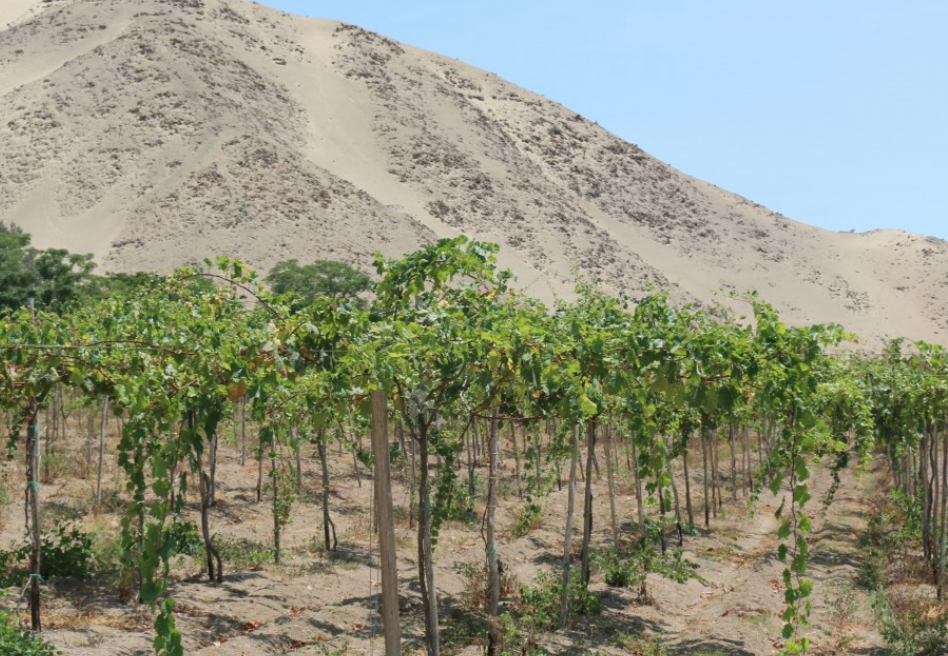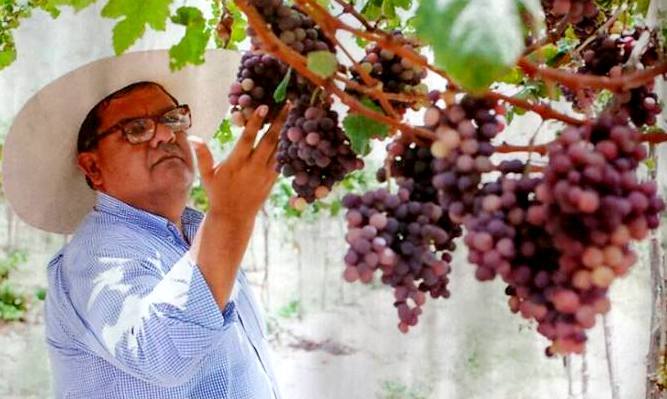Most wines you’ll try from Peru are made with international varieties such as Sauvignon Blanc and Petit Verdot. However Peru has a natural diversity of ancient grape varieties too. In this interview with Peruvian winemaker Pepe Moquillaza, we look at the diversity of Peru’s grape varieties and see which have the most potential
How diverse are Peru’s grape varieties?
South American viticulture was born in the capital of the viceroyalty, in around 1539 to 1540 (Pizarro conquered Cusco in 1535 and the Viceroyalty was created in 1542). There are records of vineyards being sold by 1549.
The diversity of grape varieties in Peru was wide: from the Criolla grapes, such as the Listán Prieto and Negramoll, to a great variety of Moscatels (Muscats) and Albillas. They were used to make table wines, mistelas and Pisco.
In Peru, the only South American mestiza grape was born: Quebranta. It was a cross between Listán Prieto and Negramoll, a grey [pink] grape of great quality and high productivity.
Peru’s genetic bank of grapevines – like Chile’s – is far from the capital: 1000 km south of Lima are the old wine-producing valleys of the south. And this is where we are already organizing the search for classification and registration of the old varieties.
Which grape varieties do you think have the most potential in Peru?
The country is vast and diverse with many different terroirs. There is evidence, however, that the sands of the desert at altitudes below 800 masl are conducive to making quality Quebranta, Mollar and Albilla. These varieties are very comfortable in sandy loam terrains and their strength is the way they have adapted to scarce water [drought conditions].

There is also evidence that the highest and stoniest vineyards of the south (at more than 1300 metres above sea level) that offer the optimum conditions for the Negra Criolla [Listán Prieto/País/Criolla Chica] and Moscatel (Muscat) vines. They are quite expressive varieties, but the viticulture system used, which is geared towards Pisco production, tends not to bring out the components that are desirable in wine. We need to change the viticultural methods so they are appropriate for wine production in order to really discover these varieties.
The international grape varieties grown today arrived after the Pacific War and have been planted almost exclusively in the valleys of Ica, Cañete and Chincha at moderate altitudes. In the Ica valley, Torrontés (torontel) works well and offers more freshness than the same variety planted in Argentina. Tacama winery has been successful with Tannat, Petit Verdot and Carmenère; and Intipalka with Sauvignon Blanc and Malbec.
In Chincha, there is a coastal Chenin Blanc that is beginning to get noticed, while a Sauvignon Blanc is being made in Apurimac that is soon going to be something to talk about!
I’m on the hunt to plant Pinot Noir and Riesling in a specific terroir too. It’s not my priority at the moment, but I always have my eyes and arms open!
How is your project, Mimo, going in terms of recovering these old varieties of Peru?
During the Pacific War (1879-1883) most of the haciendas located between Nazca, Pisco and Lima were burned down and so most of our oldest genetic material was lost. For this reason, our job is to recover and give value to these varieties – Quebranta and the Pisco varieties. The international varieties are not Peru’s heritage.
I have two small projects: coastal wines in Ihuanco, 4 km from the sea, with Camilo Quintana; and the desert wines in Ica, 40 km from the sea, with Matías Michelini. We only produce natural wines with Pisco grapes; the base has been Quebranta and some co-fermentations with other Pisco grapes.
This year we have vinified Criolla Negra [Listán Prieto/País/Criolla Chica] and Albilla from the Pisco area near the coast (15 km away) plus some pink Moscatels (Muscats). We have just as much faith in Albilla as we do in Quebranta. If you harvest the Pisco grapes early, you get lower terpenes and great natural acidity. With a careful maceration, a beautiful acidity emerges and it doesn’t feel like a dessert wine!
- Read more about Criolla varieties.
- Read our guide to Ica and Peru’s wine country.
- Check out our video interview with Pepe Moquillaza in his vineyards in Ica.
- Read our complete guide to Peruvian varieties in our A to Z of South American wine grapes.
- Take a look at Peru wine production statistics in our guide to South America Wine Production.
Photo of Pepe Moquillaza (top) taken by Santiago Barco
